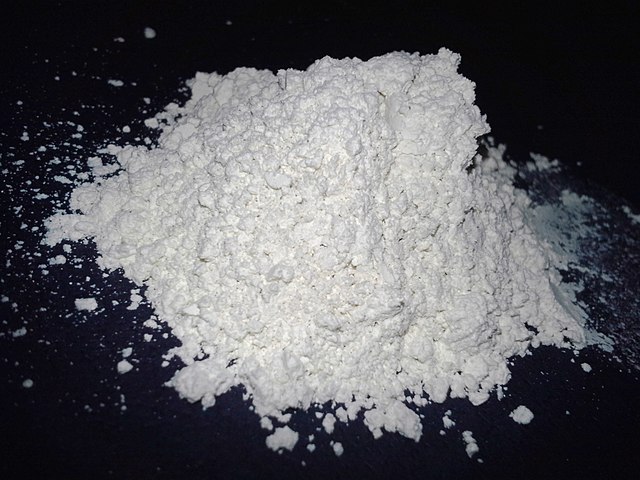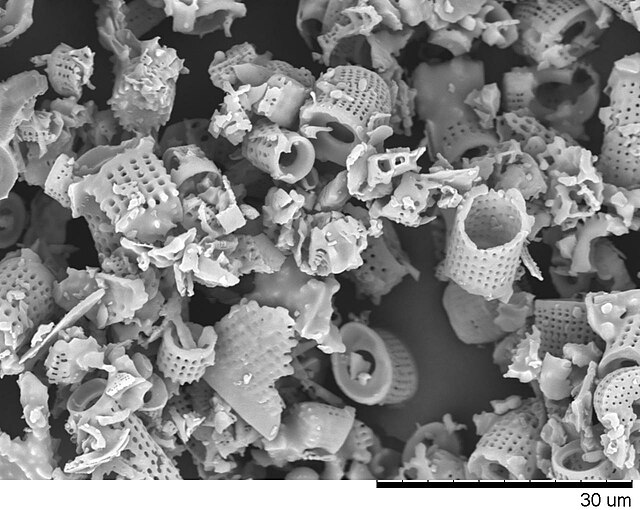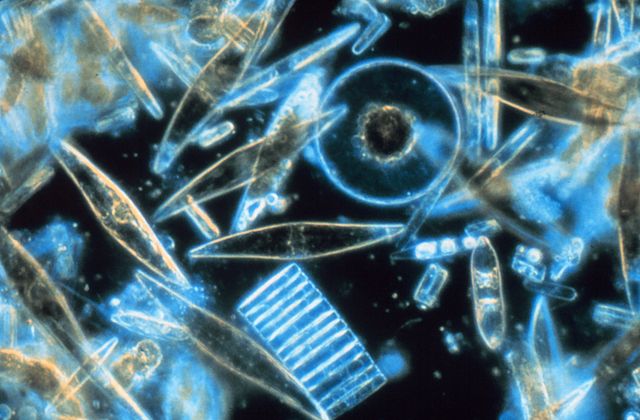Diatomaceous earth, diatomite, celite or kieselgur/kieselguhr is a naturally occurring, soft, siliceous sedimentary rock that can be crumbled into a fine white to off-white powder. It has a particle size ranging from more than 3 mm to less than 1 μm, but typically 10 to 200 μm. Depending on the granularity, this powder can have an abrasive feel, similar to pumice powder, and has a low density as a result of its high porosity. The typical chemical composition of oven-dried diatomaceous earth is 80–90% silica, with 2–4% alumina, and 0.5–2% iron oxide.
A sample of food-grade diatomaceous earth
Scanning electron micrograph of diatomaceous earth
c. 1900–1910 Diatomaceous earth pit at Neuohe
c. 1900–1910 a drying area: One firing pile is being prepared; another is under way.
A diatom is any member of a large group comprising several genera of algae, specifically microalgae, found in the oceans, waterways and soils of the world. Living diatoms make up a significant portion of the Earth's biomass: they generate about 20 to 50 percent of the oxygen produced on the planet each year, take in over 6.7 billion tonnes of silicon each year from the waters in which they live, and constitute nearly half of the organic material found in the oceans. The shells of dead diatoms can reach as much as a half-mile deep on the ocean floor, and the entire Amazon basin is fertilized annually by 27 million tons of diatom shell dust transported by transatlantic winds from the African Sahara, much of it from the Bodélé Depression, which was once made up of a system of fresh-water lakes.
Diatom
Intricate structures of the diatom Areolae (hexagonal or polygonal boxlike perforation with a sieve present on the surface of diatom) Striae (pores, punctae, spots or dots in a line on the surface) Raphe (slit in the valves) Central nodule (thickening of wall at the midpoint of raphe) Stigmata (holes through valve surface which looks rounded externally but with a slit like internal) Punctae (spots or small perforations on the surface) Polar nodules (thickening of wall at the distal ends of the raphe)
Selections from Ernst Haeckel's 1904 Kunstformen der Natur (Art Forms of Nature), showing pennate (left) and centric (right) frustules.
Light microscopy of a living diatom. Numbered graduations are 10 micrometres apart








